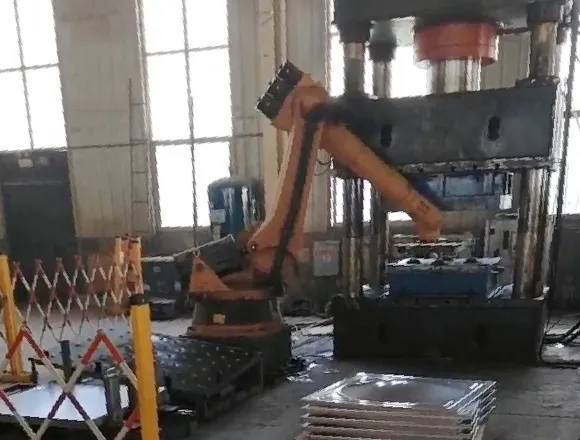loading...
- No. 9, Xingyuan South Street, Dongwaihuan Road, Zaoqiang County, Hengshui, Hebei, China
- admin@zjcomposites.com
- +86 15097380338
- Welcome to visit our website!
Sectional Water Tank Design for Greater Reliability and Efficiency in Water Storage
Understanding GRP Sectional Water Tanks
In today's rapidly evolving construction and infrastructure landscape, having reliable and efficient water storage solutions is essential. Among various options available, Glass Reinforced Plastic (GRP) sectional water tanks have gained significant popularity due to their unique advantages and versatility in multiple applications.
What are GRP Sectional Water Tanks?
GRP sectional water tanks are pre-fabricated containers designed for water storage, constructed from fiberglass reinforced plastic. The sections are manufactured in a factory and later assembled on site, offering a modular approach that is both practical and adaptable. These tanks are frequently used for potable water supply, industrial applications, and firefighting systems, among other uses.
Key Features and Advantages
1. Durability and Longevity One of the standout features of GRP sectional water tanks is their durability. They are resistant to corrosion, rust, and physical damage, making them ideal for long-term use in various environmental conditions. This longevity translates to reduced maintenance costs and a lower need for replacements.
2. Lightweight and Easy to Transport Compared to traditional concrete or steel tanks, GRP tanks are lightweight, which simplifies transportation logistics and installation. The sections, being modular, can easily fit into standard-sized vehicles, reducing transportation costs.
3. Customizable Sizes and Shapes These tanks can be tailored to meet specific needs, whether that be in terms of size, shape, or capacity. This flexibility allows for easy integration into existing structures or new developments, accommodating various site constraints.
4. Insulation Properties GRP tanks can provide insulation against temperature extremes, thereby helping to maintain the quality of stored water. This is particularly beneficial in regions with drastic temperature fluctuations, ensuring that potable water remains uncontaminated and at a lower risk of bacterial growth.
grp sectional water tank

5. Easy Installation With the modular assembly of GRP tanks, installation time is significantly reduced. This efficiency is especially beneficial in emergency situations where rapid deployment is crucial, such as in disaster relief or temporary water supply infrastructures.
Environmental Impact
The environmental implications of using GRP sectional water tanks are significant. Their production involves fewer raw materials compared to concrete, and they can be recycled at the end of their life cycle. Moreover, their durability means fewer resources are needed for replacements and repairs, reducing the overall carbon footprint associated with water storage systems.
Applications
GRP sectional water tanks are incredibly versatile, finding applications across various fields, including
- Municipal Water Supply Cities and towns often utilize these tanks to ensure a reliable water supply, from reservoirs to distribution systems. - Firefighting Systems With their ability to store large volumes of water safely, GRP tanks are commonly part of emergency water storage systems for firefighting. - Industrial Use Many industries, including food and beverage, pharmaceuticals, and manufacturing, rely on these tanks for process water storage, chemicals, and waste management. - Agricultural Needs Farmers use GRP tanks for irrigation, livestock water supply, and other agricultural purposes due to their capacity and ease of use.
Conclusion
GRP sectional water tanks are not merely a fleeting trend in water storage; they represent a lasting solution that meets modern requirements for efficiency, sustainability, and adaptability. Whether it’s for municipal, industrial, or agricultural use, their robust design and customizable nature ensure they fit a wide array of applications. As water scarcity becomes a growing concern globally, investing in reliable storage solutions like GRP tanks will be essential for future-proofing water management systems. With continued innovations in materials and design, GRP sectional water tanks are poised to remain a cornerstone of effective water storage for years to come.
-
The Rise of FRP Profiles: Strong, Lightweight, and Built to LastNewsJul.14,2025
-
SMC Panel Tanks: A Modern Water Storage Solution for All EnvironmentsNewsJul.14,2025
-
GRP Grating: A Modern Solution for Safe and Durable Access SystemsNewsJul.14,2025
-
Galvanized Steel Water Tanks: Durable, Reliable, and Ready for UseNewsJul.14,2025
-
FRP Mini Mesh Grating: The Safer, Smarter Flooring SolutionNewsJul.14,2025
-
Exploring FRP Vessels: Durable Solutions for Modern Fluid HandlingNewsJul.14,2025
-
GRP Structures: The Future of Lightweight, High-Performance EngineeringNewsJun.20,2025
